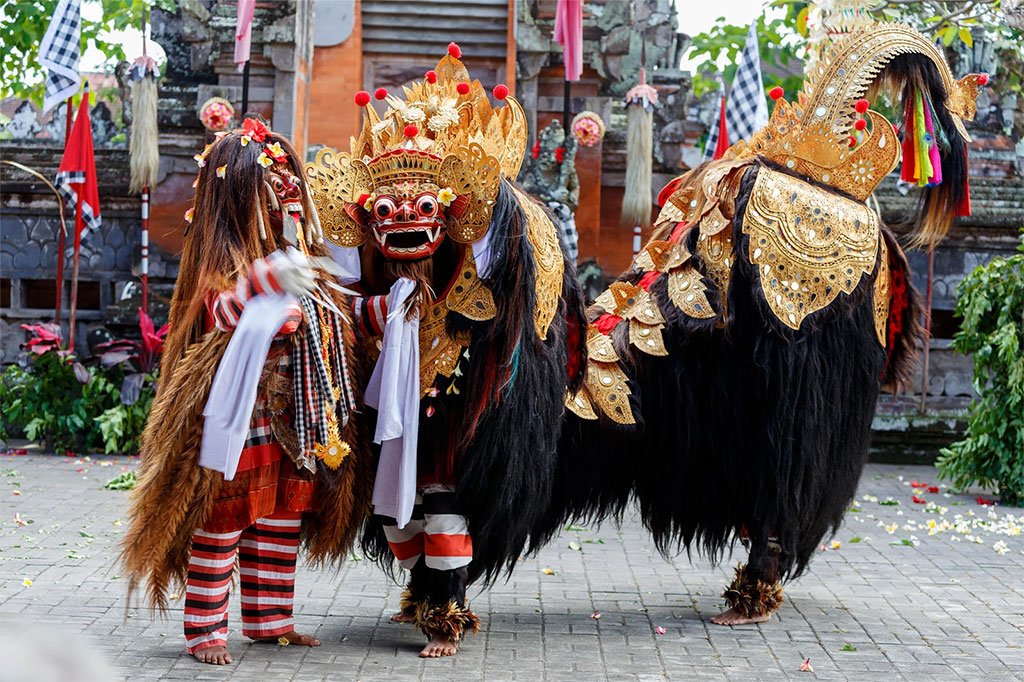🌴 Ubud Bali Travel Guide: Top Cultural Experiences invites travelers to dive deep into the heart of Bali’s rich cultural tapestry. Nestled amidst lush rice terraces and dense jungles, Ubud is renowned as Bali’s cultural hub, offering an authentic glimpse into traditional arts, spirituality, and local life. Whether you’re a first-time visitor or a seasoned traveler, Ubud is a treasure trove of experiences that stir the soul and ignite the senses.
In this comprehensive guide, we’ll explore Ubud’s must-see cultural landmarks, immersive activities, and unique traditions that make it a captivating destination. Prepare to discover ancient temples, vibrant dance performances, intricate craft villages, and spiritual ceremonies that define Bali’s identity.
Discovering Ubud: A Cultural Heartbeat of Bali
Ubud is more than just a town; it’s a cultural sanctuary. Its allure comes from a harmonious blend of nature, art, and spirituality. As the birthplace of Balinese art and dance, Ubud draws visitors keen to experience the island’s heritage beyond the beaches.
The town itself is surrounded by emerald-green rice paddies, sacred rivers, and steep cliffs. Ubud’s architecture reflects its spiritual roots, with many buildings featuring traditional Balinese carvings and shrines. It’s a place where time slows down, inviting introspection and connection.
1. Exploring Ubud’s Iconic Temples 🛕
Temples in Ubud are not just places of worship but are living cultural centers where rituals, ceremonies, and community gatherings unfold. Visiting these temples offers insight into Balinese Hinduism and the island’s rich mythology.
Pura Taman Saraswati
Located in the heart of Ubud, Pura Taman Saraswati is dedicated to Saraswati, the goddess of knowledge, art, and wisdom. This water temple is famous for its stunning lotus pond and intricate stone carvings. The serene ambiance here often hosts traditional dance performances in the evenings.
Pura Dalem Agung Padangtegal
Known as the “Temple of the Dead,” this temple is dedicated to Shiva and plays a key role in Ubud’s spiritual life. Surrounded by the Monkey Forest, it is a fascinating place to witness offerings and rituals honoring ancestral spirits.
Goa Gajah (Elephant Cave)
Although slightly outside Ubud, Goa Gajah is a significant archaeological site featuring a cave with intricate rock carvings dating back to the 11th century. The temple grounds include bathing pools and fountains, symbolizing purification and renewal.
2. Witness Traditional Balinese Dance Performances 💃
No visit to Ubud is complete without experiencing the captivating traditional dances, which tell stories from Hindu epics like the Ramayana and Mahabharata. These performances combine expressive gestures, vivid costumes, and dramatic music.
The Legong Dance
Performed by young girls, the Legong dance is a highly stylized classical dance characterized by intricate finger movements and precise footwork. It is often staged at Ubud Palace, a regal setting that adds to the enchanting atmosphere.
Barong and Kris Dance
This ritualistic dance dramatizes the battle between good and evil, featuring Barong, the protective spirit, and Rangda, the demon queen. The Barong dance is not only entertaining but also deeply spiritual, symbolizing balance and harmony.
3. Participate in a Traditional Balinese Ceremony 🙏
Balinese ceremonies are colorful, elaborate, and deeply meaningful. If you’re lucky, you might be invited to join or observe a local ceremony, providing a unique cultural immersion.
Melukat Purification Ceremony
This spiritual cleansing ritual involves bathing in holy water to purify the body and soul. It’s a profound experience for visitors seeking inner peace and connection to Balinese spirituality.
Galungan Festival
Celebrated every 210 days, Galungan marks the victory of good over evil. During this festival, Ubud’s streets are adorned with penjor—bamboo poles decorated with coconut leaves and offerings. Participating or witnessing Galungan celebrations is a rare cultural privilege.
4. Visit Ubud’s Art Villages 🎨
Ubud is surrounded by villages famous for traditional crafts, each specializing in different art forms that have been passed down through generations.
Celuk Village – Silver and Goldsmiths
Celuk is renowned for its exquisite silver and gold jewelry. Watch skilled artisans craft delicate pieces by hand, using traditional techniques.
Mas Village – Woodcarving
Mas is the woodcarving center of Bali. Here, you can observe master carvers creating intricate sculptures from teak and mahogany, often depicting Hindu gods and mythological scenes.
Batubulan Village – Stone Carving
This village is known for stone sculptures, particularly statues of Hindu deities and mythical creatures carved from volcanic stone.
5. Explore the Ubud Market 🛍️
The bustling Ubud Market is a vibrant place to experience local life and shop for authentic Balinese crafts. From handwoven textiles and batik fabrics to silver jewelry and wooden masks, the market offers a kaleidoscope of colors and textures.
Haggling is expected, and interacting with friendly vendors adds to the charm. Early mornings are the best time to visit for fresh produce and fewer crowds.
6. Engage in a Traditional Balinese Cooking Class 🍛
Food is an essential part of culture, and learning to cook Balinese dishes offers insight into local ingredients and culinary traditions.
Classes often start with a visit to a traditional market to select fresh spices, herbs, and produce. You’ll learn to prepare iconic dishes such as babi guling (suckling pig), lawar (mixed vegetable and meat salad), and sambal (chili sauce).
7. Yoga and Meditation Retreats in Ubud 🧘♂️
While not purely cultural, Ubud’s reputation as a wellness hub blends seamlessly with its spiritual heritage. Yoga and meditation retreats are often held in serene settings overlooking rice terraces or jungle valleys, reflecting the Balinese philosophy of harmony between mind, body, and nature.
Many retreats incorporate Balinese spiritual practices such as mantra chanting and prayer offerings, enriching the cultural experience.
8. Traditional Balinese Music: Gamelan 🎶
Gamelan, a traditional ensemble featuring metallophones, drums, gongs, and bamboo flutes, is integral to Balinese ceremonies and performances. You can attend live gamelan concerts or participate in beginner workshops, learning the rhythms and sounds that define Balinese music.
9. Visit the Blanco Renaissance Museum and Neka Art Museum 🖼️
For art lovers, these museums showcase the work of prominent artists inspired by Bali’s culture and landscapes.
- Blanco Renaissance Museum celebrates the flamboyant works of Don Antonio Blanco, whose paintings vividly depict Balinese women and mythology.
- Neka Art Museum houses a broad collection of traditional and contemporary Balinese and Indonesian art.
10. Take a Walk Through the Rice Terraces 🌾
The iconic rice terraces around Ubud are not only scenic but also cultural symbols of subak, the traditional Balinese irrigation system managed by local communities. Walking through these terraces offers an understanding of Balinese agriculture, which is deeply intertwined with spiritual beliefs.
Final Thoughts on Ubud Bali Travel Guide: Top Cultural Experiences
Ubud is a place where culture is not just preserved but lived daily. From sacred temples and traditional dances to vibrant markets and artisan villages, the town offers travelers an authentic encounter with Bali’s soul. This Ubud Bali Travel Guide: Top Cultural Experiences hopes to inspire your journey into the island’s heart, encouraging you to explore with curiosity, respect, and wonder.
Frequently Asked Questions (FAQ) About Ubud Bali Travel Guide: Top Cultural Experiences
1. What is the best time to visit Ubud for cultural experiences?
The best time to visit Ubud is during the dry season, from April to October. This period offers pleasant weather, making it easier to explore temples, attend festivals, and enjoy outdoor performances. For cultural festivals like Galungan, check the Balinese calendar as the date changes every 210 days.
2. Are there any entrance fees for visiting temples in Ubud?
Yes, most temples in Ubud, such as Pura Taman Saraswati and Goa Gajah, charge a small entrance fee. Fees typically go towards maintenance and preservation of the sites. Always dress modestly and respectfully when visiting temples.
3. Can tourists participate in traditional Balinese ceremonies?
While some ceremonies are private and sacred to locals, many temples and communities welcome tourists to observe or participate respectfully. If invited to join, follow local customs, dress appropriately, and always ask permission before taking photos.
4. Where can I watch traditional Balinese dance performances in Ubud?
Ubud Palace is one of the most popular venues for nightly traditional dance performances, including Legong and Barong dances. The performances often start around 7 PM and tickets can be purchased at the venue or through local hotels.
5. How do I get to Ubud’s art villages like Celuk and Mas?
Art villages such as Celuk and Mas are a short drive from central Ubud, typically 10 to 15 minutes by taxi or scooter. Many tours include visits to these villages, or you can explore independently with a rental scooter or driver.
6. Is it safe to walk around the rice terraces?
Walking around Ubud’s rice terraces is generally safe and highly recommended to experience the local landscape and farming culture. However, some paths may be slippery or uneven, so wear comfortable footwear and take care when navigating narrow trails.
7. What traditional Balinese dishes can I learn to cook in Ubud?
Cooking classes in Ubud often teach popular dishes such as nasi goreng (fried rice), babi guling (suckling pig), lawar (vegetable and meat salad), and various sambals (spicy chili sauces). Classes usually include market visits to select fresh ingredients.
8. Are there any yoga and meditation retreats in Ubud that incorporate Balinese culture?
Yes, many yoga and meditation centers in Ubud blend traditional Balinese spiritual practices like mantra chanting and offerings into their programs. Popular retreats include The Yoga Barn and Radiantly Alive, which offer holistic experiences in serene natural settings.
9. Can I buy authentic Balinese crafts in Ubud Market?
Absolutely! Ubud Market is the best place to find a wide range of authentic Balinese crafts, including silver jewelry, textiles, woodcarvings, and paintings. Haggling is common and part of the fun, but always remain polite and respectful.
10. How can I respect Balinese customs while visiting?
To respect Balinese customs, dress modestly, especially when visiting temples (cover shoulders and knees), remove shoes when entering sacred places, avoid touching people’s heads, and never point your feet towards shrines. Always be polite and open to learning about local traditions.










Join The Discussion